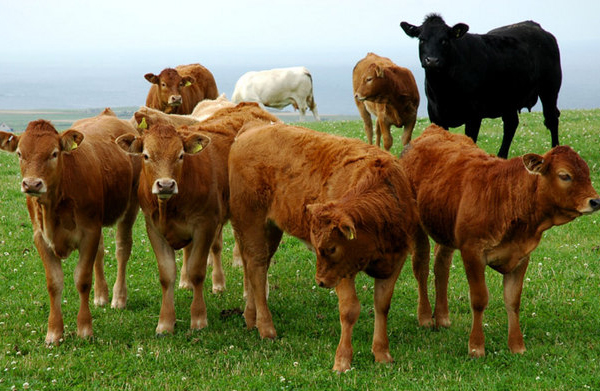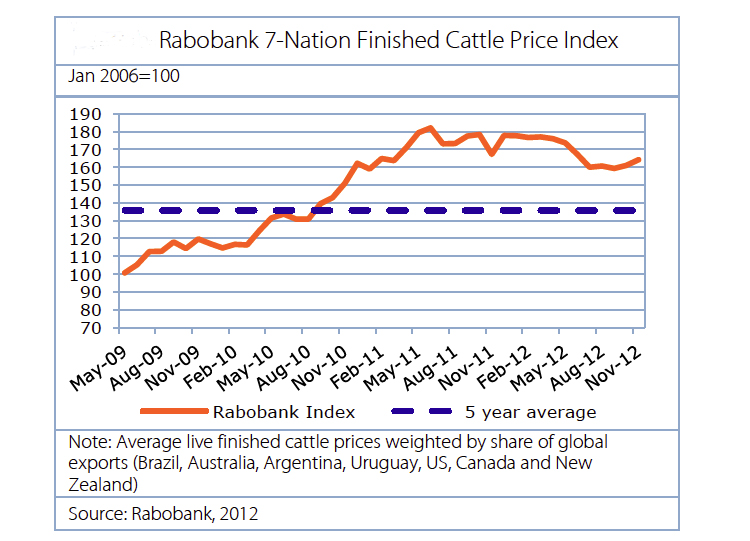
The final quarter of 2012 has seen the beef market characterized by slightly larger global supply, driven mainly by the natural recovery of herds in Brazil, Argentina and Australia.
This, combined with a relatively lethargic world economy, has weighed on prices across the globe.
Among the most important cattle exporting countries prices in local currencies have risen only in the US and New Zealand.
These increases may not be high enough to offset the recent spike in costs, with the placements of cattle on feed in the US being cut.

In November, Rabobank’s Global Cattle Price Index dropped 2% from Q3 levels. This was mainly driven by the decline realized in Brazil, Australia, Argentina and Canada, which more than offset the rise seen in the US and New Zealand.
The strengthening of the greenback against many currencies combined with weaker demand across many important countries has also contributed to the downtrend in global cattle prices denominated in US dollars.
In a year-over-year comparison, the Index is beginning December down 11% from where it began in November.
"We expect to see global supply hovering around 2012 levels, with minor ups and downs being determined by the extent to which the increase in Southern Hemisphere will outpace the reduction in Europe and the US" said analyst Guilherme Melo.
"On the demand side of the equation, the broader picture points to another year of relatively weak consumption on the back of the still sluggish economy, as world GDP is expected to grow only slightly in 2013."
"The scenario is worse where production is set to decrease, such as North America and Europe, which poses additional pressure for beef companies located in these regions to pass on rising cattle prices to consumers. Additionally, as such countries rely on grains to feed their animals they are likely to see a reduction in their competitiveness in the international market."
"Conversely, companies located in South America, particularly in Brazil, should benefit from herd recovery and the acceleration of the economy, which offer processors an opportunity to increase/sustain their margins."
"Nonetheless, headwinds for the South American industry will probably blow from the Middle East and North Africa, where companies are likely to face a tougher environment for expanding exports in 2013."
"This reflects the uncertainties resulting from political and economic changes after the Arab spring and ongoing internal conflicts, which are contributing to weakening activity." Melo added.
A bullish factor for the industry is the strong need for supply discipline in the poultry and pork sectors.
Production cuts are likely to come about, driven by negative margins in the wake of severe feed cost increases.
To the extent that this increases poultry and pork prices, it may also benefit the beef industry as the gap between beef and these two meats prices narrows and possibly shifts demand towards beef.
